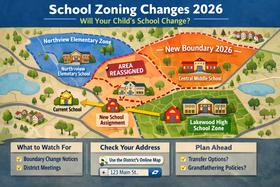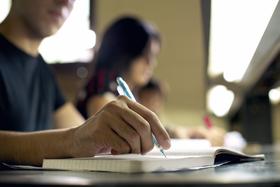For the 2025-26 school year, there is 1 public high school serving 237 students in Randolph County School District. This district's average high testing ranking is 1/10, which is in the bottom 50% of public high schools in Georgia.
Public High School in Randolph County School District have an average math proficiency score of 5% (versus the Georgia public high school average of 35%), and reading proficiency score of 15% (versus the 42% statewide average).
Public High School in Randolph County School District have a Graduation Rate of 74%, which is less than the Georgia average of 85%.
The school with highest graduation rate is Randolph Clay High School, with 70-79% graduation rate. Read more about public school graduation rate statistics in Georgia or national school graduation rate statistics.
Minority enrollment is 99% of the student body (majority Black), which is more than the Georgia public high school average of 65% (majority Black).
Overview
This School District
This State (GA)
# Schools
3 Schools
534 Schools
# Students
708 Students
577,747 Students
# Teachers
42 Teachers
35,722 Teachers
Student-Teacher Ratio
17:1
17:1
Student By Grade
District Rank
Randolph County School District, which is ranked within the bottom 50% of all 222 school districts in Georgia (based off of combined math and reading proficiency testing data) for the 2022-2023 school year.
The school district's graduation rate of 75% has decreased from 80-84% over five school years.
Overall District Rank
#188 out of 222 school districts
(Bottom 50%)
(Bottom 50%)
Math Test Scores (% Proficient)
25%
39%
Reading/Language Arts Test Scores (% Proficient)
17%
40%
Science Test Scores (% Proficient)
15-19%
40%
Graduation Rate
75%
84%
Students by Ethnicity:
Diversity Score
0.09
0.71
% American Indian
n/a
n/a
% Asian
n/a
5%
% Hispanic
1%
18%
% Black
95%
37%
% White
2%
36%
% Hawaiian
n/a
n/a
% Two or more races
2%
4%
All Ethnic Groups
District Revenue and Spending
The revenue/student of $20,944 is higher than the state median of $14,305. The school district revenue/student has grown by 10% over four school years.
The school district's spending/student of $19,155 is higher than the state median of $13,431. The school district spending/student has grown by 10% over four school years.
Total Revenue
$15 MM
$24,999 MM
Spending
$14 MM
$23,473 MM
Revenue / Student
$20,944
$14,305
Spending / Student
$19,155
$13,431
Best Randolph County School District Public High Schools (2025-26)
School
(Math and Reading Proficiency)
(Math and Reading Proficiency)
Location
Quick Facts
Rank: #11.
Randolph Clay High School
(Math: ≤5% | Reading: 11-19%)
Rank:
Rank:
1/
Bottom 50%10
3451 Ga Highway 266
Cuthbert, GA 39840
(229) 732-2101
Cuthbert, GA 39840
(229) 732-2101
Gr: 9-12 | 237 students Student-teacher ratio: 15:1 Minority enrollment: 99%
Recent Articles

Public School Open House & Enrollment Season Guide for Parents
Learn what to ask at a public school open house during enrollment season, from academics to safety, to choose the right school for your child.

School Zoning Changes 2026: How Assignments May Shift
School Zoning Changes 2026 could affect your child’s school assignment. Learn how zoning works, what is changing, and how families can prepare.

School Vouchers: Updated Pros and Cons (2025 Review)
Comprehensive 2025 analysis of school vouchers, weighing benefits and challenges for families, funding, outcomes, and policy directions.





